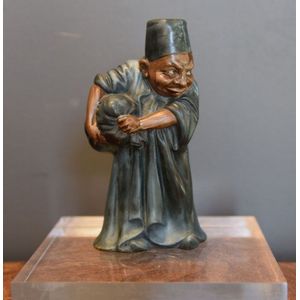
Rare Royal Doulton Titanium Figurine from Arabian Nights
Extremely rare Royal Doulton titanium figurine 'One of the forty Thieves, c.1930' a character from Arabian Nights, by Harry Tittensor. Royal Doulton backstamp on bottom. Also the numbers 8.22 and 318. 16 cm
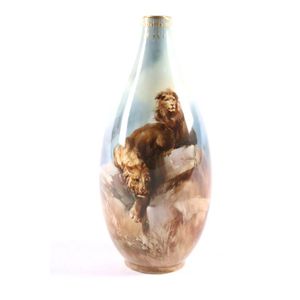
Lion Stalking Flambe Vase by Harry Tittensor
Royal Doulton vase baluster shaped. Decorated with lions Stalking amongst rocks. The neck gilded with lace design. Signed H (Harry) Tittensor, stamped flambe to base, '1847'. Height 35 cm

Royal Doulton Groningen Church Vase
Royal Doulton trophy shaped two handled footed vase, with all over painted scene 'Old church at Groningen, Holland. Signed H Tittensor, green printed factory mark, orginal paper label, height: 18.5 cm
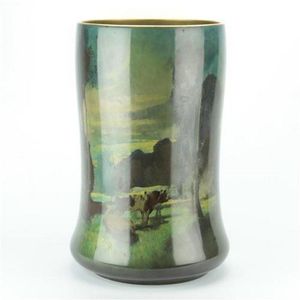
Harry Tittensor's Moonlit Cow Vase
Royal Doulton titanian vase by Harry Tittensor depicting a cows resting in a field under a moonlit sky, painted with a gilded rim, artists signature 'H Tittensor', impressed mark '1360'. Condition fair, damage & repair to the base. Height 39.5 cm

Royal Doulton King Charles Figure, HN1985
Royal Doulton figure 'King Charles' with a green printed factory mark, gilt title, HN1985. Designed by Charles Noke & H Tittensor. Condition good, minor age related wear. Height 42 cm

Royal Doulton Mermaid Figurine
A Royal Doulton figurine 'Mermaid', HN97, designed by Harry Tittensor, c.1918-1936, lustre glazed finish, her long blonde hair with green seaweed highlights, red bead necklace, green and blonde (tan) base, printed mark, painted #HN97 and impressed…

Hand-painted Royal Doulton Burslem 'Titanian' vase with Rubaiyat scene
An impressive Royal Doulton Burslem exhibition 'Titanian' vase hand-painted by Harry Tittensor, (act. 1900 - 1925), c.1918, painted with a scene from the 'Rubaiyat of Omar Khayyam', inscribed under the base with quatrain 37 from the Rubaiyat. Printed…

Royal Doulton Handpainted Vase - "The Monastry Door"
Impressive and rare Royal Doulton glazed china vase, with handpainted scene entitled 'The Monastry Door'. Artist Harry Tittensor. Height 41.7 cm. Diameter 20.2 cm.
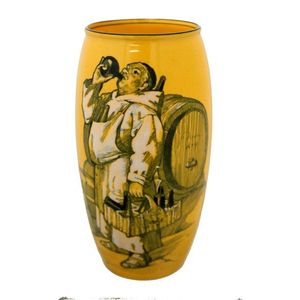
Hand-painted Royal Doulton Monk Vase by Tittensor
A Royal Doulton yellow vase of ovoid form, hand-painted with a jolly Monk. Signed Harry Tittensor. Height 18 cm
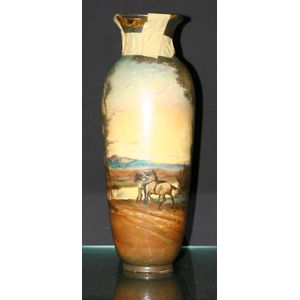
Harry Tittensor Royal Doulton Vase with Plough Boy
A Royal Doulton vase, by Harry Tittensor, painted with a young plough boy tethering horses in a moorland landscape, signed H. Tittensor, original paper label to base damages to neck, 42 cm high
 Loading more...
Loading more...